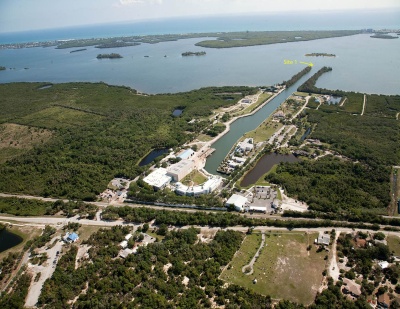
The Indian River Lagoon Observatory Network
of Environmental Sensors
The Indian River Lagoon (IRL) is situated along 156 miles of
Florida's east coast. Urbanization, excessive freshwater releases,
degradation of water quality, contaminant loading, loss of habitat
(e.g., seagrasses, mangroves), harmful algal blooms, decline of
fisheries, and emerging diseases in marine mammals and other biota are
increasingly important issues in the IRL, as they are throughout the
world.s estuaries and coastal waters. The Indian River Lagoon
Observatory (IRLO),
based at Florida Atlantic University's Harbor Branch Oceanographic
Institute, is conducting long-term, multi-disciplinary, ecosystem-based
research on this nationally significant estuary.
IRLO research and education activities are being enhanced by the
deployment of an estuarine observation network of land/ocean
biogeochemical observatory (LOBO) units and weather sensors to provide
real-time, high-accuracy and high-resolution water quality/weather data
through this dedicated interactive website. The LOBO network enables
researchers to follow environmental changes in the IRL, assist resource
and planning managers to make informed decisions, model and correlate
environmental data to biological, chemical and physical phenomena, and
contribute to education and public outreach on the lagoon.
Currently LOBOs are deployed at nine sites in the IRL and St.
Lucie Estuary (SLE). Four sites in Indian River County and St. Lucie
County are made possible by funding from FAU Harbor Branch, a grant from
the Harbor Branch Oceanographic Institute Foundation, and grants from
Florida's Save Our Seas specialty license plate. Five sites in the St.
Lucie Estuary (SLE) and nearby IRL are funded the 2014 State Legislative
Budget through the Florida Department of Environmental Protection
(FDEP). A tenth site, made possible by the South Florida Water
Management District and located in the SLE, will be deployed by the end
of 2015. All of these sites are ecologically important because of the
dynamic interface between oceanic water from the inlets with freshwater
inputs from the river, canals, and Lake Okeechobee.
